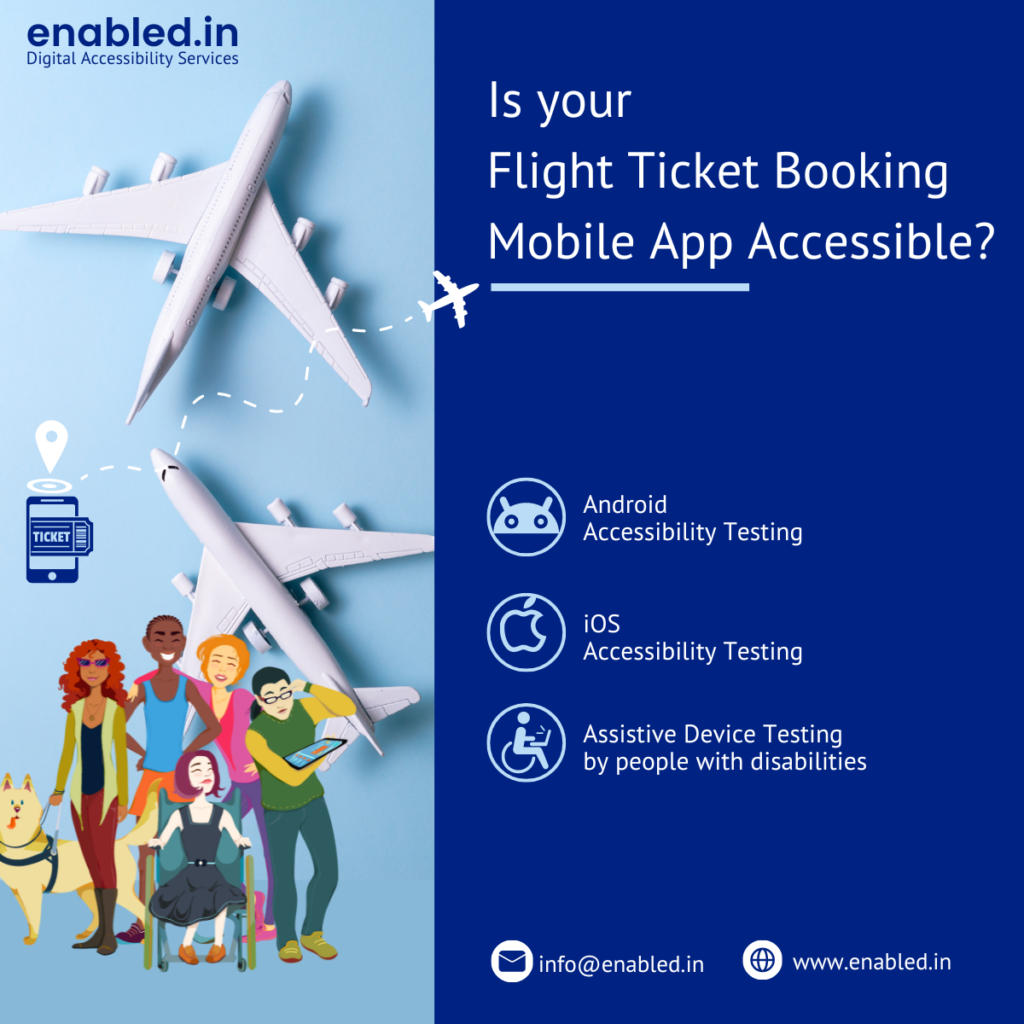
Navigating and booking the flight ticket in travel apps for challenging not only for individuals with disabilities, Its for all.
In response to this growing need, entities like the IATA have pledged to enhance travel accessibility, reflecting a broader industry movement towards inclusivity in flight booking applications.
This trend towards accessible booking is not just about compliance but building a more inclusive travel ecosystem that accommodates the diversities of all travelers.
Challenges in Current Flight Booking Mobile App
- Navigating the digital landscape of flight booking can be a daunting task for individuals with disabilities, primarily due to non-compliant mobile app designs and complex interactive elements.
- A significant challenge is the seat selection process, often inaccessible for screen reader users because of visual diagrams that are not screen-reader friendly. To enhance accessibility, it is suggested that airlines implement alternative methods like seat booking functionalities should clearly labeled and seat availability or use drop-down menus for seat selection
- Additionally, the standard method for selecting travel dates involves grid-like calendars, which pose accessibility barriers for those using screen readers. A more user-friendly approach would be to utilize scrollable month and date drop-down menus, simplifying the process and making it more accessible
Best Practices for Enhancing Flight Ticket Booking App Accessibility
- Clear and Consistent Layout: Ensure that the app has a clear and consistent layout with logical navigation. Use standard interface elements and follow platform guidelines to enhance familiarity for users.
- Font Size and Contrast: Allow users to adjust the font size to improve readability. Use sufficient contrast between text and background colors for users with visual impairments.
- Screen Reader Compatibility: Ensure compatibility with screen readers such as VoiceOver for iOS or TalkBack for Android. Implement proper labeling and descriptions for all interactive elements.
- Alternative Text for Images: Provide alternative text for images within the app. This will assist visually impaired users who rely on screen readers to understand the content.
- Keyboard Accessibility: Make sure the app is fully navigable using a keyboard alone. Users should be able to access all functionality and features without relying on touch gestures.
- Error Handling and Feedback: Provide clear and meaningful error messages when users encounter issues or make mistakes. Offer feedback and confirmation when actions are completed successfully.
- Assistive Device Support: Ensure compatibility with assistive devices such as alternative input methods, switches, or joysticks. This will allow users with physical disabilities to interact with the app effectively.
- Timeouts and Session Management: Avoid overly short session timeouts or automatic logouts that could interrupt users while they’re inputting or reviewing information.
- User Testing and Feedback: Conduct user testing with individuals with diverse abilities to gather feedback and identify potential accessibility barriers. Implement user feedback to continuously improve accessibility.
- Compliance with Accessibility Guidelines: Adhere to recognized accessibility guidelines, such as the Web Content Accessibility Guidelines (WCAG 2.2 ), to ensure your app meets the necessary accessibility standards.
Remember, accessibility is an ongoing process, and it’s important to continually enhance and update your app based on user feedback and evolving accessibility best practices.
Get started today?
We can offer future-proof Mobile App Accessibility Testing and WCAG Audit Service to Flight Ticket Booking App and Flight Ticket Booking Web Applications.